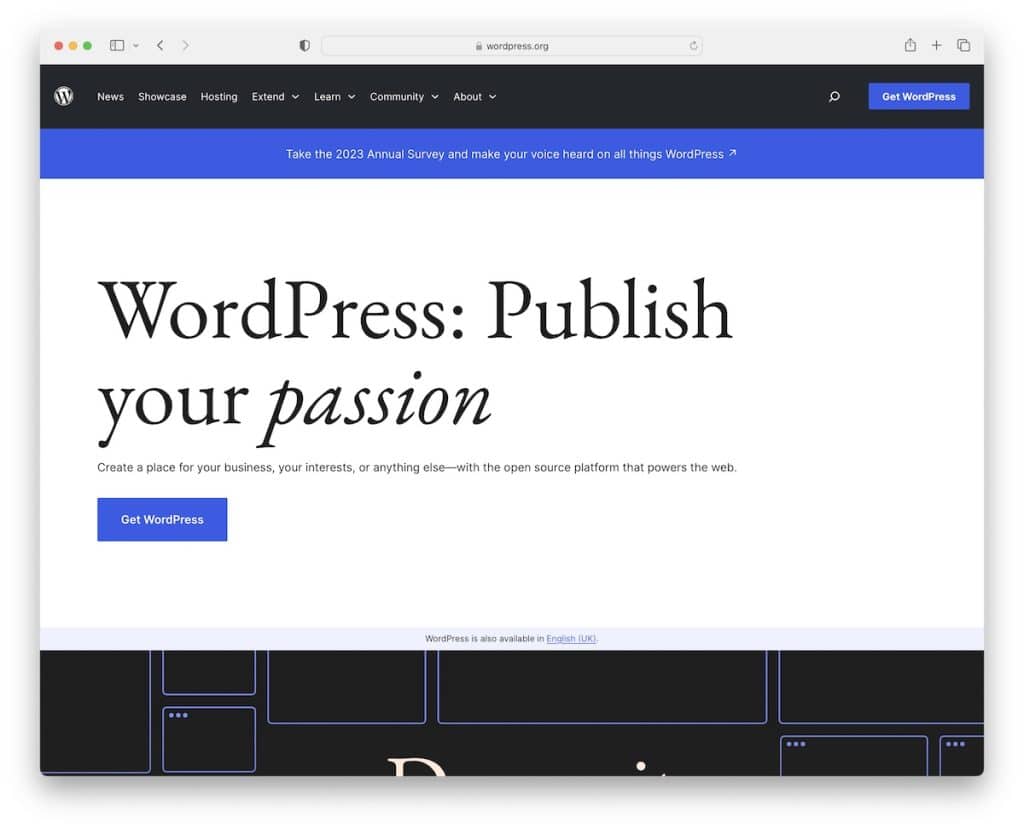9 Best Multilingual CMS In 2024
Are you searching for the best multilingual CMS to create a truly global (or local?) web project?
Whether you’re a small business looking to expand your reach, a blogger eager to connect with a global audience, or a large corporation aiming to streamline your international presence, finding a suitable CMS is crucial.
In this article, we’re diving deep into multi-language CMS platforms. We’ll guide you through the top contenders that make managing content across different languages possible and a breeze.
We understand the importance of effectively communicating with your audience, no matter where they are or what language they speak.
So, let’s explore together how these platforms can transform your digital content strategy.
This post covers:
The Best Multilingual CMS
Navigating the vast sea of CMS options can be overwhelming, but we’ve done the legwork to bring you the cream of the crop in multilingual capabilities.
Let’s go!
1. WordPress
WordPress stands out as the premier multilingual CMS for its extensive functionality, community, and ease of use.
A rich array of plugins like WPML and Polylang bolsters its adaptability to different languages. These transform any site into a global platform with ease.
What sets WordPress apart is its intuitive interface, making content management accessible to users of all skill levels. You don’t need to be a code pro to enjoy its amazing perks!
The support network around WordPress is unparalleled, with forums, tutorials, and developers readily available to assist with multilingual setups.
Whether for personal blogs or corporate websites, WordPress provides the tools and resources to engage a global or local audience effectively.
Key Features of WordPress:
- Many plugins, like WPML, Polylang, and TranslatePress, add multilingual capabilities for easy content translation and management.
- Some WordPress multilingual plugins offer automatic language detection features. They direct users to their preferred language version of the site based on their browser settings or geo location.
- Language switcher widgets in menus, sidebars, or directly embedded within the site’s content provide a seamless experience for users to select their preferred language.
- Beyond just content, it supports the translation of themes and other plugins. This ensures the localization of all aspects of a site, including buttons, contact forms, and navigation menus.
- WordPress is known for its intuitive and easy-to-navigate dashboard, making managing multilingual content accessible to all users.
Best for:
WordPress suits businesses, bloggers, and organizations looking to expand their global reach by creating accessible, user-friendly multilingual websites.
Pricing: WordPress is a free and open-source CMS.
2. Contentful

Contentful emerges as a top contender in the multilingual CMS arena, particularly for those who prioritize flexibility and scalability.
In Contentful, locales allow you to define content localization and choose a specific locale when querying the Content Delivery API. It makes it incredibly flexible for global content strategies. Plus, adding and managing locales is very straightforward.
This ensures that you can tailor the CMS to your specific needs, choosing to localize only the content that makes sense for your audience.
Contentful’s robust API-driven architecture enables developers to build custom integrations and workflows, ensuring that content translation and distribution are streamlined and efficient.
Moreover, its intuitive content modeling and powerful editorial tools empower content creators to manage and publish multilingual content easily.
Key Features of Contentful:
- Comprehensive locale management enables users to define content localizations and select specific locales when querying the Content Delivery API.
- The API-first architecture means it’s built to integrate seamlessly with various platforms and systems.
- Being a headless CMS, Contentful separates content management from content delivery. It provides greater flexibility in how and where content is displayed, including support for multilingual and localized content experiences.
- Users can enable locales on a per-space and per-field basis. Enjoy precise control over which content is localized and how it’s presented.
Best for:
Contentful is for developers and content teams in dynamic, digital-first organizations that require a scalable, API-driven platform.
Pricing: Contentful is free to use if building individual projects. But paid plans start with the Basic one at $300/month.
3. Optimizely

Optimizely shines as a multilingual CMS, catering to large websites serving a diverse, global audience.
It ensures every user receives a tailored, language-specific experience. It has robust support for translating content and the ability to define fallback languages for content that hasn’t been translated.
The CMS displays content in the visitor’s language by incorporating language indicators within the URL path or domain.
A default content language is set upon installation, but Optimizely doesn’t stop there. It allows administrators to add multiple languages and configure access rights, ensuring content creators have the appropriate permissions for different language segments.
What’s also really cool is that you can alter the display of the user interface in various languages.
Furthermore, Optimizely’s ecosystem includes specialized features for those utilizing its Customized Commerce or Search & Navigation solutions, offering comprehensive multi-language management capabilities that extend beyond content.
Key Features of Optimizely:
- Optimizely provides fallback language capabilities, ensuring users receive relevant content without encountering missing content pages.
- Enforcing language visibility in the URL, either in the path or domain part. This makes it clear to users and search engines which language version of the content is displayed.
- The system can automatically detect the language preference set in the user’s browser.
- It improves usability and productivity for multi-lingual teams with localization of the CMS user interface.
Best for:
Optimizely is for large enterprises and digital-first organizations seeking a sophisticated, scalable platform to deliver personalized, localized content experiences.
Pricing: Optimizely’s CMS has per-project pricing – no default pans.
4. Contentstack
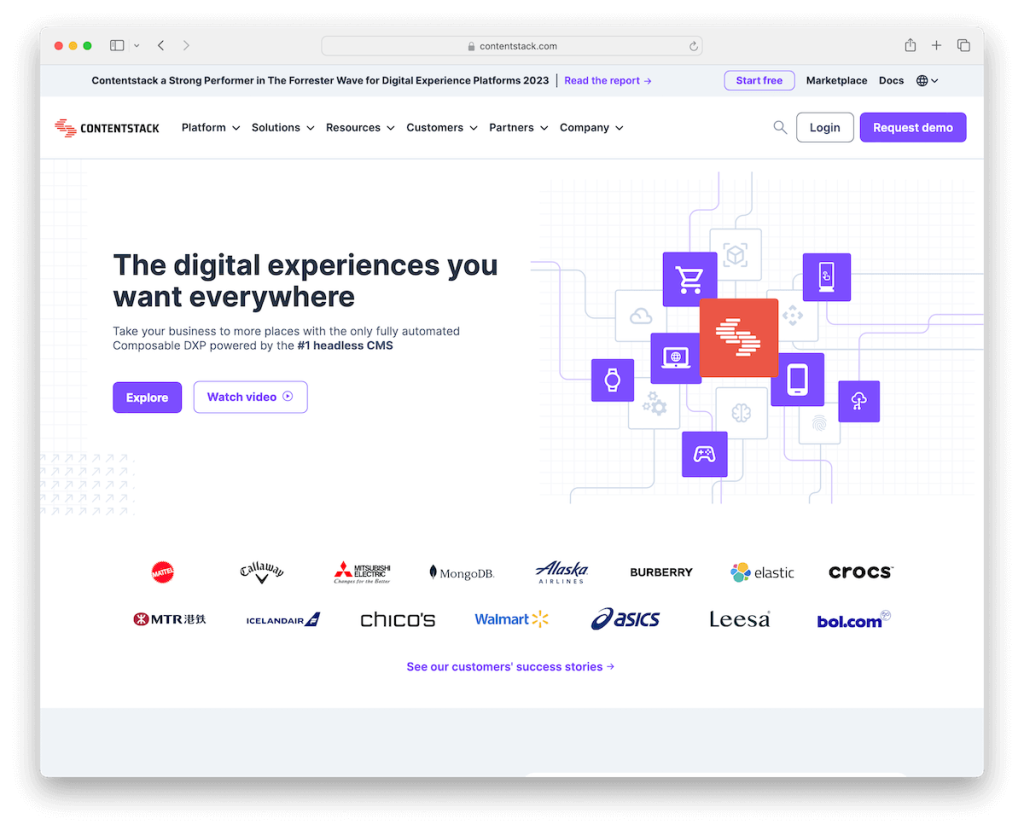
Contentstack emerges as a stellar multilingual CMS, revolutionizing how content is managed and delivered globally.
Its prowess lies in enabling the creation and publication of content in any language. Setting up multilingual websites that resonate with your diverse audiences is a breeze.
What sets Contentstack apart is its impressive support for 200+ languages. You can tailor content to different regions’ cultural and linguistic nuances without code.
Imagine seamlessly managing content for your website’s English and Spanish sections, perfectly aligning with your audience’s language preferences. (Add languages to your stack, ensuring Spanish content elegantly populates the Spanish section of your site.)
Moreover, Contentstack is incredibly flexible, accommodating even those languages that stray from standard code formats by adding custom languages. You can craft multiple localized versions of a single entry, enriching the content’s relevance and appeal.
Key Features of Contentstack:
- Create and publish content in over 200 languages, catering to a global audience like a champ.
- The platform offers a straightforward way of setting up multilingual websites and managing localized content across different languages.
- Beyond the extensive list of supported languages, Contentstack allows adding custom languages.
- Contentstack supports data inheritance from a default or fallback language when creating entries in new languages.
Best for:
Contentstack is for global brands and organizations seeking a flexible, no-code platform to manage and deliver personalized, localized content efficiently.
Pricing: Contentstack has three plans, but no plan comes with default pricing. However, you can try it for free.
5. DatoCMS
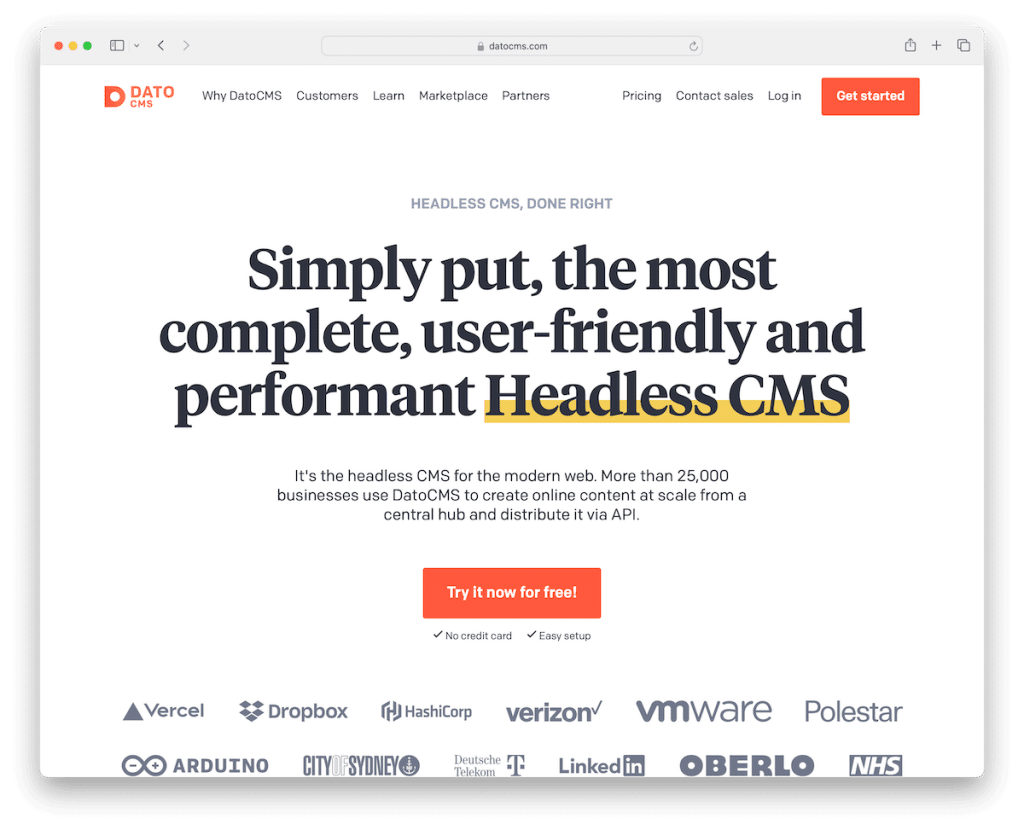
DatoCMS provides unparalleled ease in localizing content for a global audience. With the option to choose from over 400 locales, DatoCMS empowers you to publish multiple versions of your content.
Its headless architecture facilitates multi-language support and extends this capability to multi-site projects. (Deliver content seamlessly across your digital ecosystem.)
The platform’s user-friendly interface simplifies the translation process, making it accessible for teams of any technical level.
DatoCMS’s flexibility shines in its ability to localize content and assets, including rich text, images, and SEO metadata.
Customization is at the heart of DatoCMS, allowing granular control over which content is localized and in which languages, all manageable on a per-field basis.
This level of detail ensures that your multilingual content strategy can be as broad or as focused as needed without complex data migrations.
Key Features of DatoCMS:
- DatoCMS offers support for over 400 locales to publish content in a wide array of languages and reach a diverse global audience effectively.
- Easy localize content and assets, ensuring a fully localized user experience across all aspects of your digital presence.
- Users can specify which content types and fields need to be translated and in which languages. You get incredible flexibility and granularity in managing multilingual content.
Best for:
DatoCMS is for digital-first businesses and creative agencies looking for a flexible, headless CMS to efficiently manage and deliver localized content.
Pricing: DatoCMS allows you to test it free of charge or start with the entry-level Professional plan at $162/month.
6. Joomla
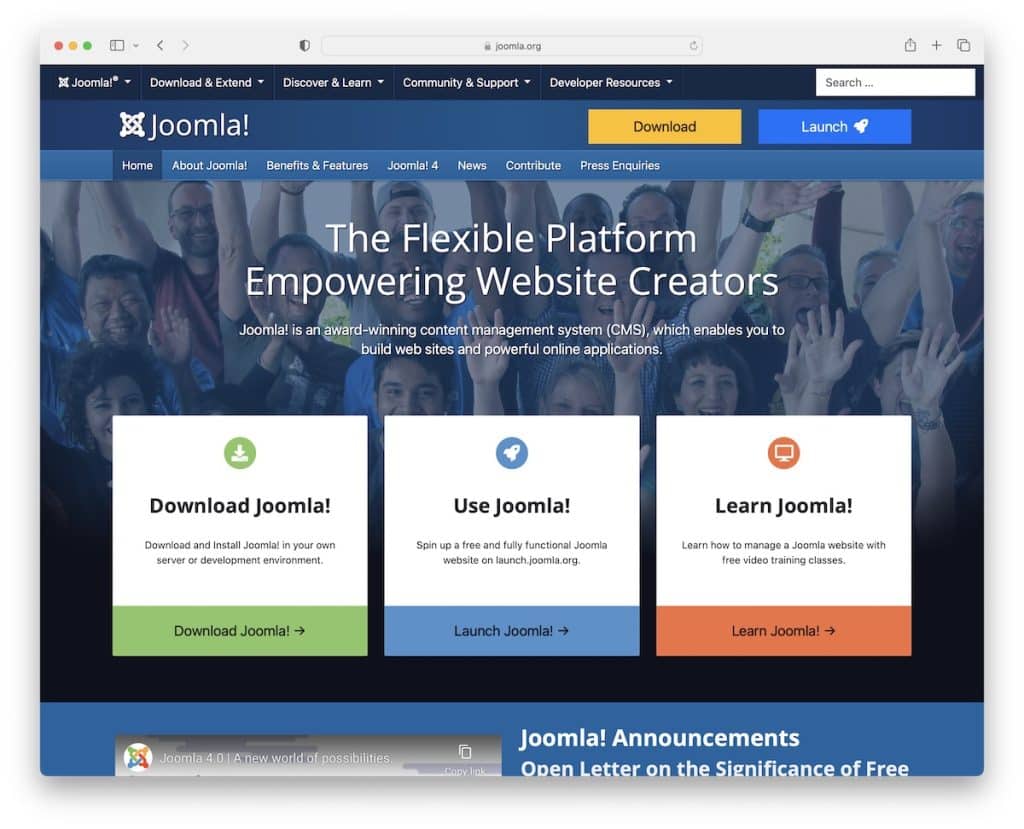
Joomla is a robust multilingual CMS, offering out-of-the-box support for multiple languages without additional plugins.
This native capability makes it a breeze for businesses and organizations to set up multilingual sites right from the start.
Joomla’s intuitive interface simplifies managing and switching between languages. It ensures a seamless user experience for site administrators and visitors.
Note that you can modify the language for site users and admins individually, taking things to the next level.
The platform also rocks a strong community and resources, providing extensive support for beginners and experts.
Key Features of Joomla:
- Built-in multilingual capabilities to create websites in multiple languages without additional extensions.
- Language switcher module so visitors can easily switch between different language versions of the site.
- A wide range of language packs, contributed by its global community, allows localizing the website’s front-end and back-end.
- Users can create and assign content directly from the Joomla back-end to specific languages.
Best for:
Joomla is for businesses, non-profits, and educational institutions seeking a comprehensive, user-friendly platform to build and manage dynamic multilingual websites.
Pricing: Joomla is free and open-source.
7. Wix
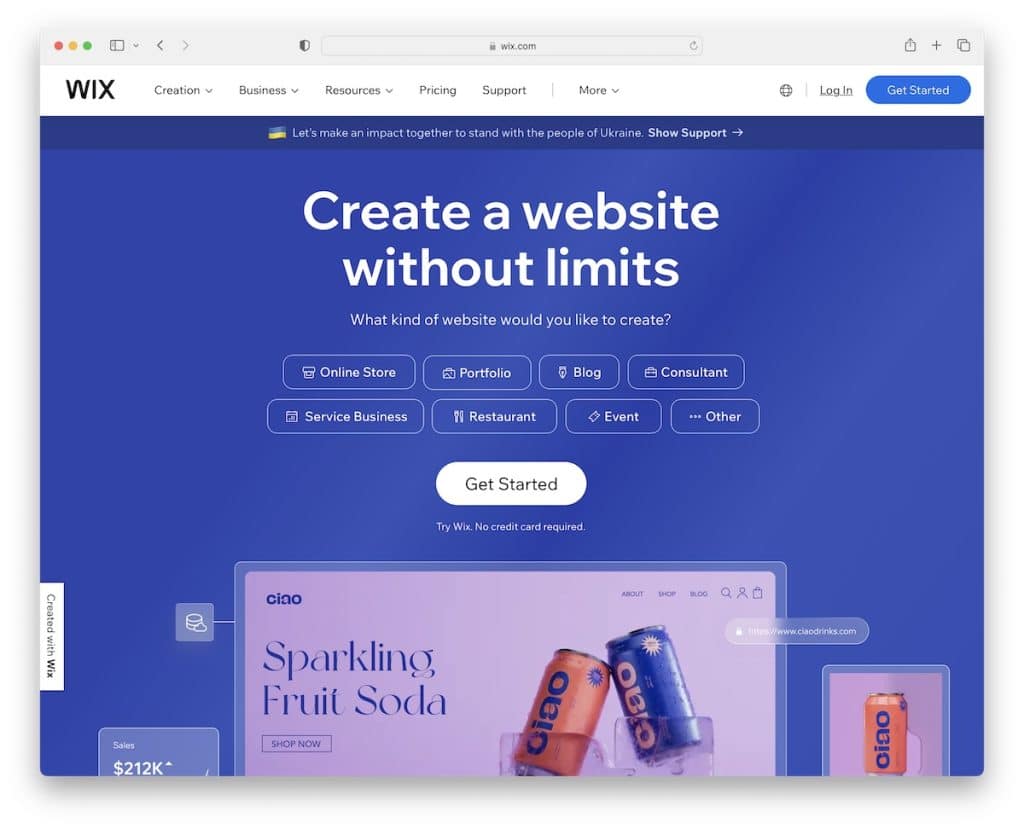
Wix is an excellent solution for businesses aiming to broaden their global footprint, offering a seamless solution to cater to audiences from various locales.
Its support for over 180 languages ensures your site speaks to every visitor in their language. The platform offers the flexibility of manual translations for a personal touch or the efficiency of auto-translating for speed.
With options to customize language menus, flags, and even SEO settings for each language, Wix provides a comprehensive toolkit to optimize your site’s international appeal.
Changes to your primary site automatically sync across all language versions, maintaining consistency while allowing for individual language adjustments.
The Multilingual Dashboard centralizes language management, simplifying the addition, translation, and customization of language versions.
You’re creating a fully localized experience that enhances navigation and boosts your site’s global SEO strategy with Wix.
Key Features of Wix:
- Create website versions in 180+ languages to reach a broad and diverse global audience.
- You can manually enter translations for a personal touch or use the auto-translate feature.
- Wix Multilingual lets you optimize SEO settings for individual language versions, including customizing URL structures and using language-specific subdomains.
- You can fully localize content and assets for each language version, creating a tailored and culturally relevant experience.
Best for:
Wix is for small to medium-sized businesses, entrepreneurs, and creatives seeking an easy-to-use, customizable platform to create and manage multilingual websites.
Pricing: Wix has a limited free plan to test the waters, with premium plans starting at $10/month. (Remember, Wix doesn’t support its multilingual function on test sites.)
8. Squarespace
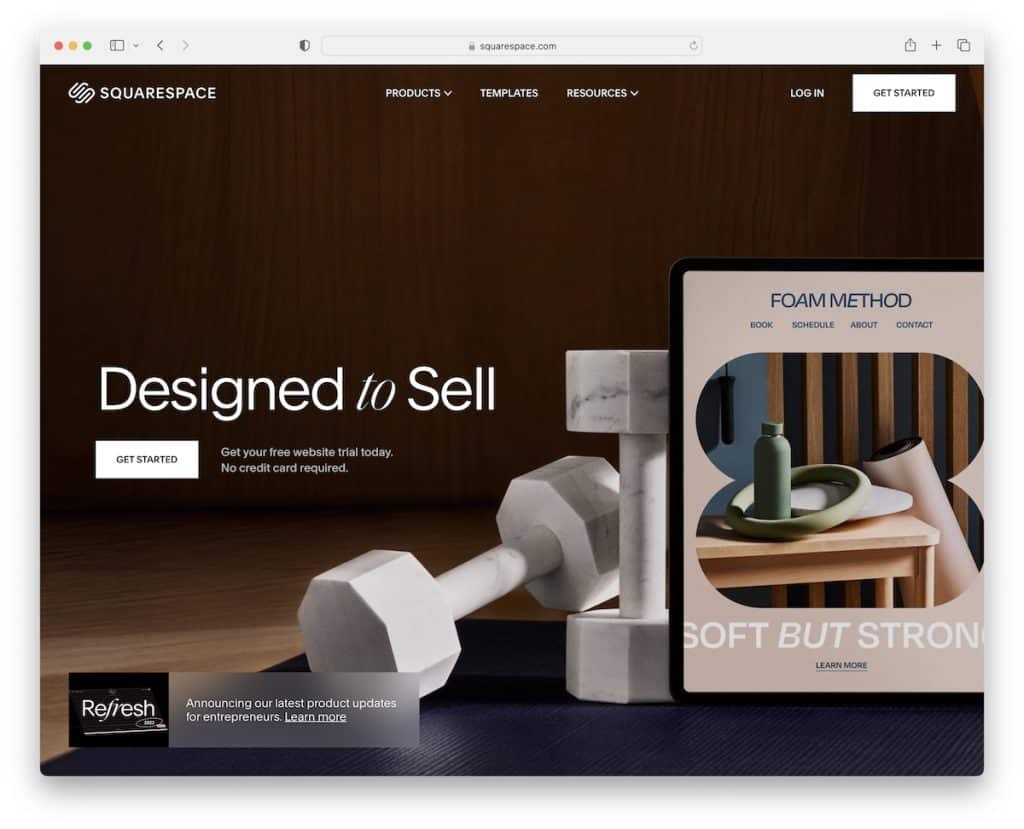
Squarespace, renowned for its design-centric approach to website creation, becomes an even more powerful multilingual CMS with its Weglot integration.
This partnership allows you to effortlessly create translated versions of your site in multiple languages, catering to an international audience with ease.
Visitors can seamlessly switch between languages using a convenient drop-down menu in your site’s header, making your content accessible and engaging for users worldwide.
Starting with Weglot is straightforward and budget-friendly. It offers a free plan for one language and up to 2,000 words, perfect for smaller sites or those just beginning their multilingual journey.
Weglot’s ten-day trial lets you explore more extensive translations, covering up to 10,000 words in another language, including customer notification emails, providing a comprehensive multilingual experience.
Note that you can also create a multilingual site manually with Squarespace.
Key Features of Squarespace:
- Weglot allows easy generation of translated versions of your website in multiple languages, broadening your site’s international reach.
- Users can access translated content through a drop-down menu in the site’s header. (Switching between languages is simple.)
- Squarespace focuses on high-quality, customizable design templates, ensuring your site doesn’t compromise on aesthetics regardless of the language.
- Squarespace’s multilingual sites are optimized for SEO in each language, enhancing visibility and searchability.
Best for:
Squarespace is for creative professionals, small businesses, and entrepreneurs seeking a visually stunning, user-friendly platform.
Pricing: Squarespace’s entry-level Personal plan goes for $16/month, with a 14-day free trial.
9. Shopify

Shopify’s localization and translation features empower store owners to translate their content into multiple languages.
This widens your reach and can significantly boost sales by ensuring your marketing, product details, and policies are clear to a global audience.
With Shopify, you can activate multiple languages from the admin panel, generating unique URLs for each version.
Note that this feature is available on all plans except Shopify Lite, allowing up to twenty languages from a single store setup.
Moreover, all free Shopify themes support multilingual selling, with 3rd-party themes often just an update away from being compatible.
Shopify enhances SEO for global audiences by automatically adding hreflang tags and including all language versions in sitemaps.
While there are some limitations, such as the translation of tags and certain URL slugs, Shopify’s commitment to multilingual support is evident in its continuous platform enhancements.
Key Features of Shopify:
- Shopify creates separate URLs for each language version of the store, improving navigation for international customers and enhancing SEO.
- Shopify automatically adds hreflang tags to your site and includes all published languages in sitemaps.
- Stores can include a language selector, often through Shopify’s Geolocation app.
- All free Shopify themes are compatible with selling in multiple languages, with many 3rd-party themes also offering this compatibility after an update.
Best for:
Shopify’ is for eCommerce businesses of all sizes looking to expand their global reach by providing a localized shopping experience.
Pricing: Shopify offers the low-tier plan for $32/month, with many other solutions to fit large and small businesses.
What Is The Best Multilingual CMS?
With all the amazing options at your disposal, picking the right CMS might be challenging. To make it easier, these three solutions stand out:
- WordPress stands out for its user-friendly interface and extensive plugin ecosystem. Tools like WPML and Polylang enable seamless creation and management of multilingual sites. It’s ideal for users ranging from bloggers to large corporations seeking a customizable and widely-supported platform.
- As a headless CMS, Contentful offers top-notch flexibility in delivering content across multiple channels and languages, supported by a robust API-first approach. It caters to businesses aiming for a scalable, developer-friendly tool to manage complex, global content strategies.
- Optimizely excels with its integrated approach, combining content management, digital marketing, and commerce capabilities, all optimized for multilingual content delivery. It’s perfect for enterprises delivering personalized, localized experiences at scale.
| CMS | Starting price | Free plan | |
|---|---|---|---|
| WordPress | Open-source | Yes | VISIT |
| Contentful | $300/month | Yes | VISIT |
| Optimizely | Custom pricing | No | VISIT |
| Contentstack | Custom pricing | Yes | VISIT |
| DatoCMS | $162/month | Yes | VISIT |
| Joomla | Open-source | Yes | VISIT |
| Wix | $10/month | Yes | VISIT |
| Squarespace | $16/month | 14-day free trial | VISIT |
| Shopify | $32/month | No | VISIT |
How To Get Started With WordPress?
Starting with WordPress as your go-to multilingual CMS can open up your content to a global audience.
Here’s a step-by-step guide to help you set up and manage a multilingual site:
- Install WordPress: Start by downloading and installing WordPress on your hosting account. Most hosting providers offer a one-click installation process, making getting WordPress up and running in minutes easy.
- Choose a multilingual-friendly theme: Select a WordPress theme that supports multilingual content. Look for themes compatible with popular multilingual plugins and that provide options for RTL (Right to Left) languages if needed.
- Install a multilingual plugin: Plugins like WPML (WordPress Multilingual Plugin), Polylang, or TranslatePress add multilingual capabilities to WordPress. Install and activate your multilingual WP plugin to create content in multiple languages.
- Configure language settings: Set up the primary language for your site and add additional languages you’ll be using. Configure language switcher options to allow visitors to choose their preferred language.
- Translate your content: Translate your posts, pages, categories, and tags. Most multilingual plugins offer manual translation options, and some provide integration with translation services for automatic translations.
- Translate your theme and plugins: Ensure that your theme and any plugins are translated. Use the multilingual plugin’s string translation feature to translate the user interface, menus, and messages.
- Test and optimize: Thoroughly test your website to ensure that the language switcher works correctly and that all content is accurately translated and displayed. Optimize your site for SEO in different languages to improve visibility in local search results.
But you may also be interested in our in-depth guide on building a multilingual WordPress website like a pro.
Frequently Asked Questions (FAQs)
What makes a CMS multilingual-capable?
A multilingual CMS supports multiple languages for content creation, management, and display, allowing users to switch languages and maintain localized site versions.
Can any CMS be made multilingual?
Most CMS platforms can be multilingual with plugins or extensions, but some have built-in multilingual capabilities that make the process more seamless.
Is a multilingual site good for SEO?
Yes, a well-configured multilingual site can improve SEO by targeting specific languages and regions, increasing your site’s visibility in local search results.
How does a multilingual CMS handle content translation?
Multilingual CMS platforms typically offer manual translation interfaces, automatic translation features, or integration with external services.
Can I use automatic translations for my multilingual site?
Yes, but reviewing and editing automatic translations is recommended to ensure accuracy and cultural appropriateness.
Do multilingual sites affect website performance?
If properly optimized, multilingual sites shouldn’t significantly impact performance. However, additional languages mean more content to manage and load.
How do I manage updates on a multilingual site?
Updates must be managed per language, ensuring all content remains synchronized and accurate across all versions.
How do multilingual CMS platforms handle URL structures for different languages?
They typically offer options for language-specific URLs, either by adding a language code as a URL parameter, using subdomains, or employing separate domains for each language.
Can I switch my existing website to a multilingual CMS without starting over?
Yes, you can convert an existing website into a multilingual site using plugins or extensions. However, it may require significant configuration and content translation efforts.
Was this article helpful?
YesNo
